|
|
|
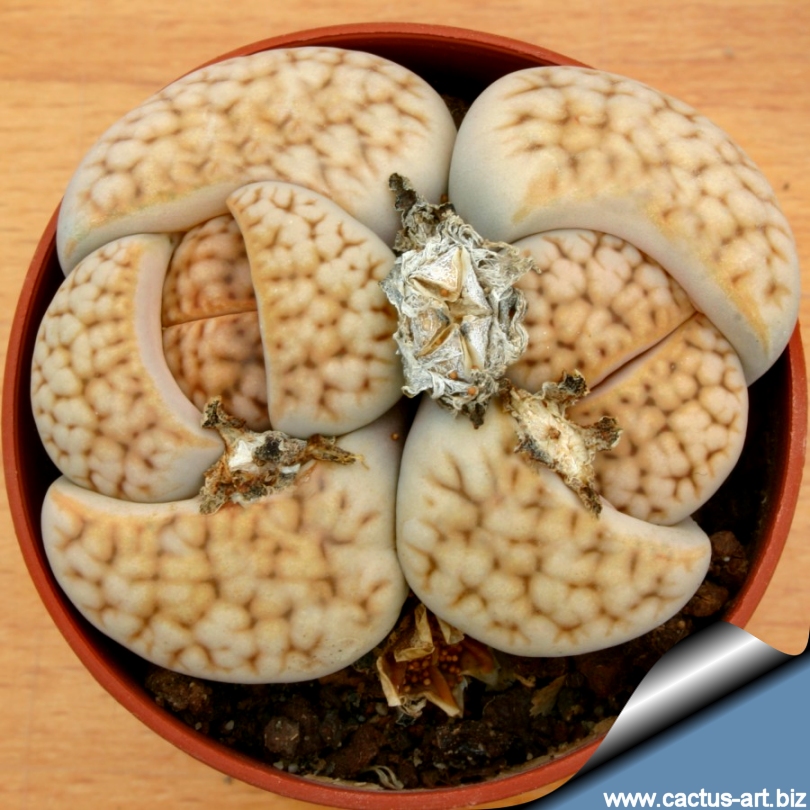
From selected red blushed plants (Mesa Garden 1625.3).
|
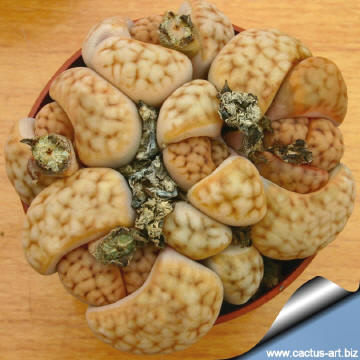 |
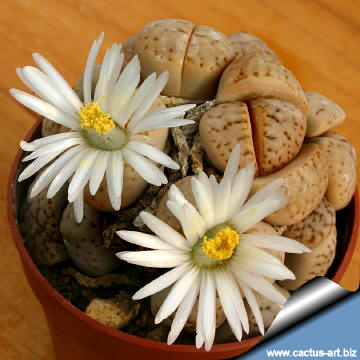
|
|
Reproduction: From seed, with seed planting best in either
October or April.
Photo of conspecific taxa, varieties, forms and cultivars of
Lithops
karasmonana
|
|


Advertising
|
|
|
|
|
Family: Mesebrianthemaceae (Aizoaceae)
Origin:
Garden origin
(Nursery selected forms)
|
|
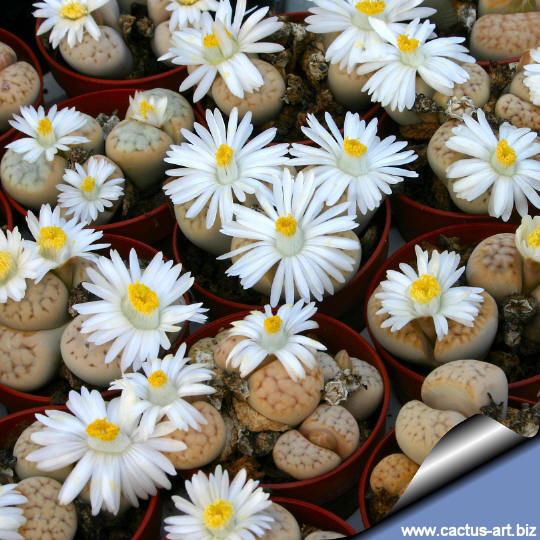
Lithops are partly subterranean, with
only the clear 'window' in each leaf tip exposed above soil. A type of
optical system exists whereby a layer of apical tissue rich in calcium
oxalate crystals acts as a filter to intense sunlight before it reaches
the thin chlorophyllous layer below. They are also called mimicry plants
as they show a striking similarity to their background rocks and are
difficult to detect when not in flower. These are the commonly known as
pebble plants or living stones; each species is associated with one
particular type of rock formation and occurs nowhere else. Its
soil-embedded, subterranean growth form also reduces the need for
chemical defences against herbivores.
|
|
|
|
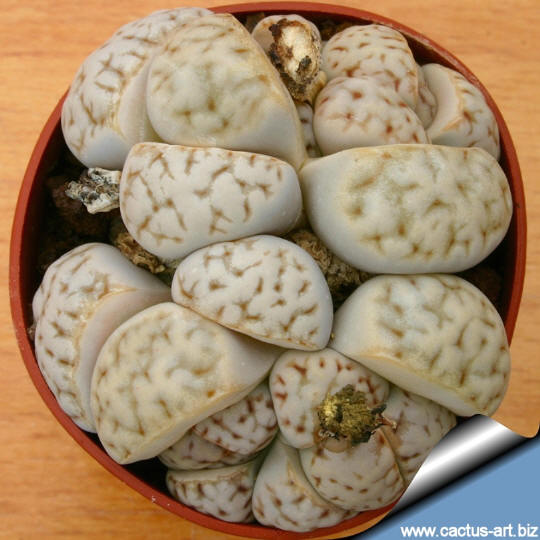
This plants have a distinctive pale pastel top mottled orange-grey often
reddish-orange. They are quite variable, no two plants look
exactly the
Cultivation: Need an open mineral, fast
draining mix and the maximum amount of light you are able
to give them. The basic cultivation routine is: Stop watering after
flowering. Start watering after the old leaves completely dry. (Usually
late March or Early April) Water freely during the growing season, soak
the compost fully but allow it to dry out between waterings. Some
growers fertilize frequently, some hardly ever. Keep them dry during the
winter. Nearly all problems occur as a
result of overwatering and poor ventilation
especially when weather conditions are dull and cool or very humid.
same.
|
|